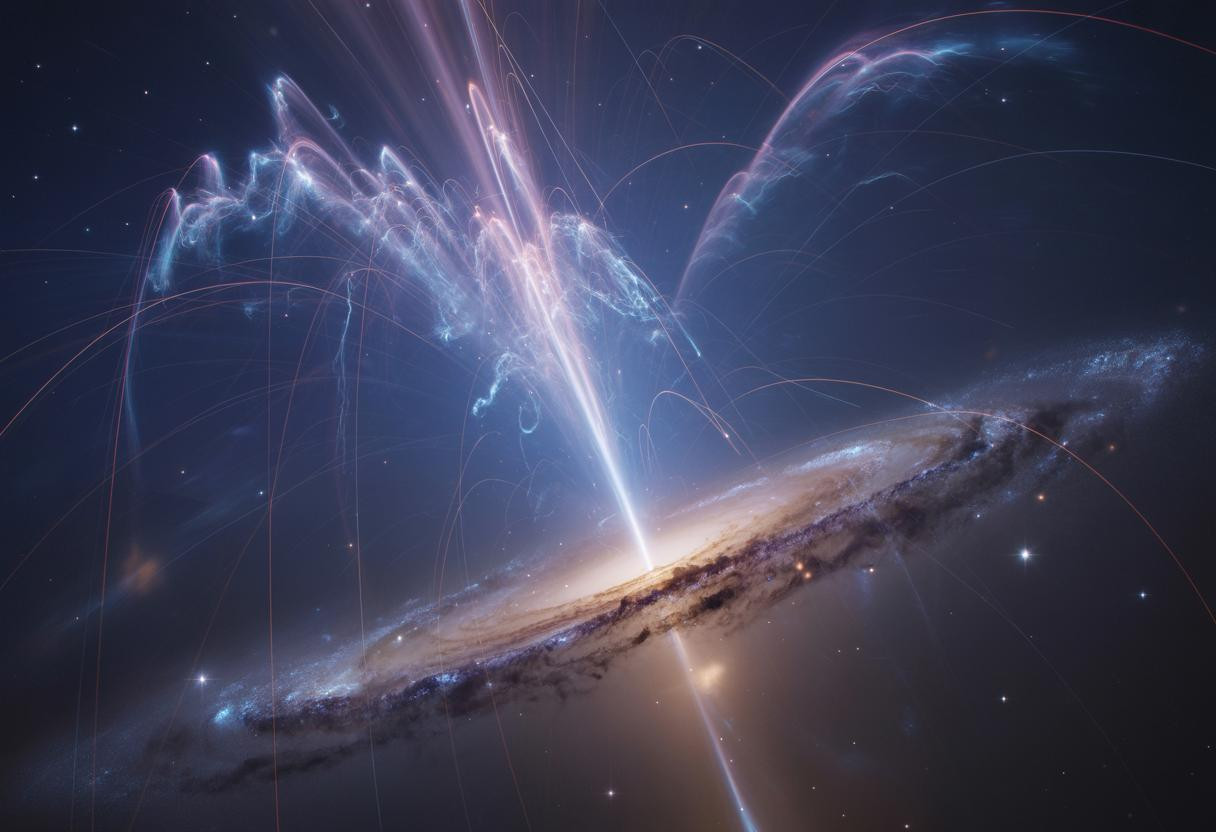In a groundbreaking astronomical discovery, the Hubble Space Telescope has identified what appears to be a rogue supermassive black hole traveling between galaxies. This cosmic wanderer, detected through a violent stellar event occurring far from any galactic center, challenges long-held assumptions about these mysterious cosmic entities and opens new frontiers in our understanding of the universe.
The cosmic nomad: What makes this black hole special?
Unlike typical supermassive black holes that reside at galaxy centers, this newly identified wandering giant was caught in the act of tearing apart a star thousands of light-years away from its host galaxy’s core. The spectacular event, designated AT2024tvd, represents the first confirmed observation of a tidal disruption event (TDE) occurring significantly offset from a galactic nucleus.
Dr. Elena Moretti, senior astrophysicist at the Space Telescope Science Institute, explains: “This is like spotting a whale swimming through a forest – these massive objects simply aren’t supposed to be found wandering so far from home. It completely reshapes our understanding of black hole dynamics.”
Cosmic collision aftermath
How does a supermassive black hole end up roaming between galaxies? Scientists propose two compelling scenarios:
- The aftermath of galactic mergers, where the central black hole of a smaller galaxy remains undigested
- Gravitational “slingshot” events where complex interactions between multiple black holes eject one into space
- Failed mergers where black holes never complete their cosmic dance
Like cosmic breadcrumbs marking an ancient path, these wandering behemoths could help astronomers reconstruct the merger history of galaxies, similar to how underwater mapping reveals hidden worlds on Earth.
The stellar feast that revealed the wanderer
The black hole announced its presence through a cosmic cataclysm – the complete destruction of a passing star. As the star ventured too close, gravitational forces stretched it like cosmic spaghetti before completely shredding it, creating a brilliantly luminous event detected by multiple observatories.
“It’s as if we witnessed a silent predator revealing itself only when feeding,” notes Dr. James Wilson, astronomer at UC Berkeley. “Without this violent interaction, this black hole might have remained invisible to us indefinitely.”
Hidden population revealed
This discovery suggests a potentially vast population of wandering black holes previously undetected. Just as Cold War space relics can orbit unnoticed for decades, these giants may drift through the cosmos unseen until dramatic events expose them.
What this means for our understanding of the universe
The implications of this discovery extend beyond mere curiosity. Consider:
- Galaxy evolution models require significant revision
- New methods for detecting “invisible” cosmic objects must be developed
- The distribution of mass throughout the universe may be different than previously calculated
This finding, alongside advances in fields like energy research and computing technology, demonstrates how modern science continues to reshape our cosmic perspective.
Could there be more cosmic nomads nearby?
The detection techniques refined through this discovery may soon reveal many more wandering giants. Like deep-sea explorers finding unexpected creatures in ocean trenches, astronomers are now equipped to search the cosmic depths for these elusive behemoths.
This cosmic vagabond serves as a powerful reminder that the universe remains full of surprises. Even massive objects like supermassive black holes – the anchors around which entire galaxies revolve – can break free and wander the cosmic wilderness, reminding us how much we still have to learn about the dynamic forces shaping our universe.
